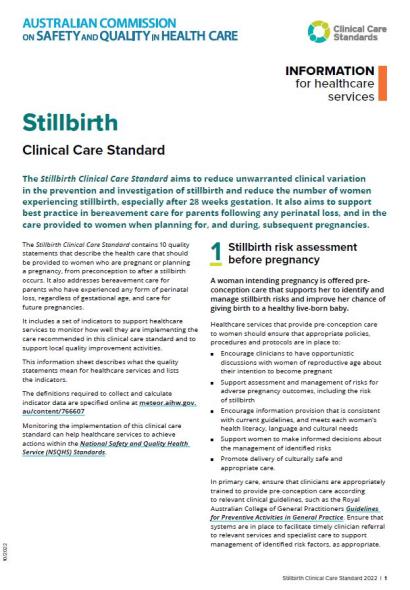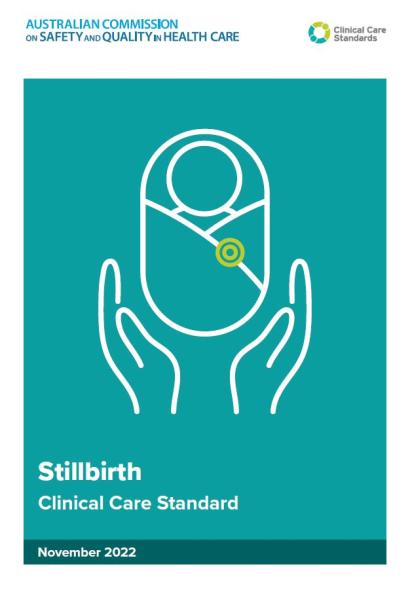Information for healthcare services – Stillbirth Clinical Care Standard
Information for healthcare services to guide practice and monitor improvement using the clinical care standard, and resources to support implementation.
The quality statements in the Stillbirth Clinical Care Standard describe the expected standard for key components of patient care. The information below explains what each statement means for healthcare services including the policies, procedures and organisational factors that can enable to delivery of high-quality care. Key considerations relating to cultural safety and equity are also included for several quality statements.
Indicators are available to help healthcare services monitor how well they are implementing the care recommended in the clinical care standard, and support local quality improvement activities.
What the quality statements mean for healthcare services
Communications resources
A communications kit has been developed to support the launch of the Clinical Care Standard. Show your support for the clinical care standard by downloading and sharing the content on your website, social networks or within your healthcare service
Resources for healthcare services
The resources below will support healthcare services to implement the Stillbirth Clinical Care standard.
Other implementation resources are also available including guidance for clinicians and resources for consumers.
See also the list of related resources for each quality statement.
-
2022Fact sheet or brochure
This resource accompanies the Stillbirth Clinical Care Standard. It describes what the quality statements mean for healthcare services and the indicators provided to support local quality improvement activity.
-
2022Publication, report or update
The Stillbirth Clinical Care Standard contains 10 quality statements and seven indicators to reduce unwarranted variation and improve the appropriateness of care for stillbirth prevention, and the quality of bereavement care following perinatal loss.
Meeting the requirements of national standards
Implementing this clinical care standard as part of a quality improvement activity can help healthcare services meet the requirements of the National Safety and Quality Health Service (NSQHS) Standards, and the National Safety and Quality Primary and Community Healthcare Standards (Primary and Community Healthcare Standards).
Within both sets of standards, the Clinical Governance Standard and the Partnering with Consumers Standard set the overarching requirements, or clinical governance framework, for the effective implementation of the other standards.
More information
If you have any questions about the Stillbirth Clinical Care Standard please email ccs@safetyandquality.gov.au.


